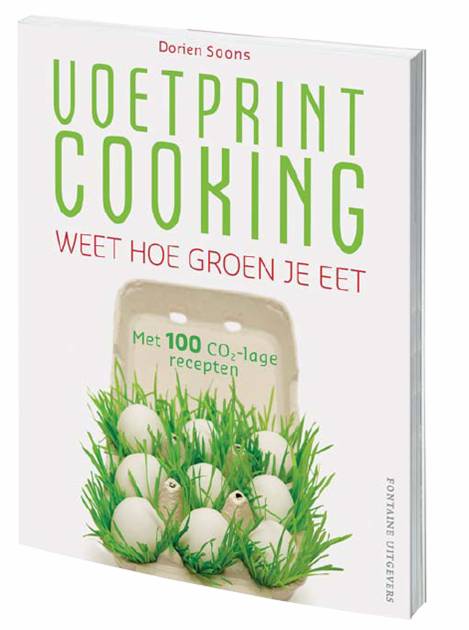What are Food Miles?
Food miles are a way of attempting to measure how far food has travelled before it reaches the consumer. It is a good way of looking at the environmental impact of foods.  It includes getting foods to you, but also getting waste foods away from you, and to the landfill! Try the FoodMiles Calculator yourself on Foodmiles.com.
It includes getting foods to you, but also getting waste foods away from you, and to the landfill! Try the FoodMiles Calculator yourself on Foodmiles.com.
How much energy does transporting food take in fact? The table from the energy encyclopedie about the energy use of foodtransport provides more insight.The unit is MJ/kg per 1.000km (MegaJoule energy use per kilogram food per 1000 kilometer distance).
Transport |
MJ/kg per 1000 km |
Boat |
0,2 - 1,0 |
Train |
1,0 |
Van |
2,0 - 5,0 |
Air |
10 - 25 |
Car |
50 - 250 |
Bron: C.E. Dutilh,, K.J. Kramer, Energy Consumption in the Food Chain, Ambio Vol. 29 No.
With what means of transport my veggies were transported to the Netherlands?
 Often this is not visible on the packaging.In general there is something to say about it[2]. Fresh, perishable products from another continent are often transported by plane. Think of asparagus, green beans, snow peas, fresh herbs, exotic fruit and ripe picked fruit. Truck and boat are used for products that do not spoil as quickly: apples, pears, grapes, bananas, avocados, onions, garlic, sweet corn are given as examples on the MilieuCentraal-website >>. MilieuCentraal is a Dutch NGO which provides consumer information and tips around the environment.
Often this is not visible on the packaging.In general there is something to say about it[2]. Fresh, perishable products from another continent are often transported by plane. Think of asparagus, green beans, snow peas, fresh herbs, exotic fruit and ripe picked fruit. Truck and boat are used for products that do not spoil as quickly: apples, pears, grapes, bananas, avocados, onions, garlic, sweet corn are given as examples on the MilieuCentraal-website >>. MilieuCentraal is a Dutch NGO which provides consumer information and tips around the environment.
A useful tool, provided that is is well understood, is the Vegetable- and Fruitcalendar of Milieucentraal[3]. Five classes are used, where A is the lowest in terms of greenhouse gases in respect of cultivation and transport:
- Open ground products in season, mostly from the Netherlands
- Dutch open ground products which are little energy-intensive and Southern-Europerean open ground products which are imported by truck or seaship. Examples are banana’s, grapefruit and oranges.
- a.A lot of vegetables and fruit which are cultivated in the heated Dutch greenhouses and b.imported products of which the production or the tramsport takes a reasonable amount of energy. Such as strawberries which are tranported (maximal 4.000 km) by plane, and c.soft fruit by boat from Chile, Argentina and Uruguay; but also products that come from China or New Zealand by boat.
- a.Intensive greenhouse-cultivation products like strawberries and b.all which has travelled a long way by plane (4000 km – 8.500 km). c.Also vegetables or fruit from the intensive Dutch greenhouse falls into class D, like strawberries from may and april.
- a.Soft fruit from heated Dutch greenhouses, b.flown in stuff like asparagus (airplane > 8,500 km). c.Also soft fruit from the Dutch heated greenhouse (blackberries, blueberries) can fall into this class.
Comments on the calendar:
- It is possible to buy in the supermarket in the same month green beans from Dutch greenhouses as well as Senegalese green beans from open ground. From open ground is lower in energy than products from a greenhouse. So a consumer must pay attention in the store at the origin of a product in a given month.
- The fact that there are heated and unheated greenhouses and/or heat resupplying greenhouses, you cannot read that immediately from the calendar. However, it is refelected in the countries shown for the month in which you want to buy a tomato. And in the PDF-version of the “vegetable-and fruit calendar” more information about heated or unheated greenhouses is included.
- The calendar can be misinterpreted by the consumer. The most obvious interpretation of the calendar is for example that a cucumber is always in class B. So you might quite quickly conclude that you can fine cucumber eat throughout the year. However cucumber from the Netherlands outside the period Apr-Oct is simply not mentioned. Probably this will still be available from the Dutch greenhouse and falls into the category C. It is therefore important to realize that the options offered are the best options in the respective months. And that the worse options might be available in the shop, but are not mentioned in the online calendar. CORRECTION: THEY ARE MENTIONED IF YOU CLICK C,D OR E IN THE SEARCH MODUS
[1] www.foodlog.nl/foodmiles_koop_dichtbij_wordt_een_thema/
[2] Dossier Biologische groente, Kassa 2009/januari 2010, p.36-37
[3] www.milieucentraal.nl/ groente en fruit kopen

